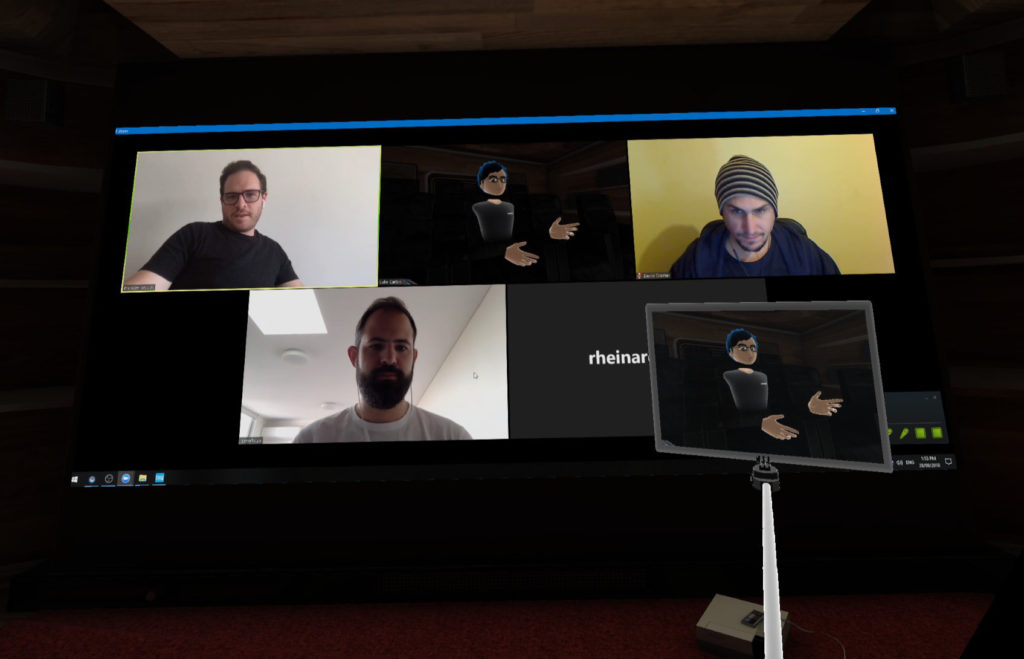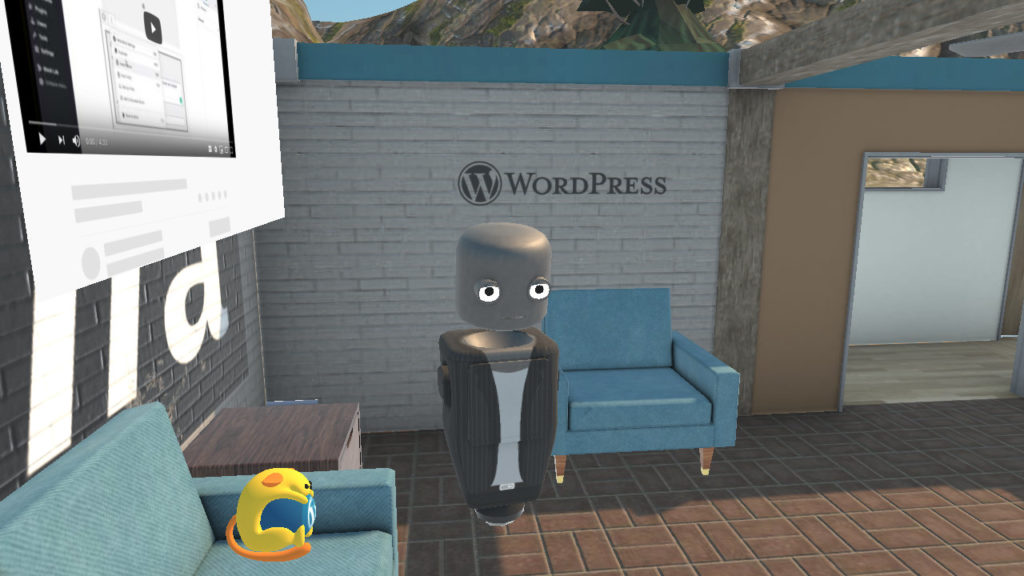One of the many takeaways I got from Matt Mullenweg’s Distributed podcast (a show about the future of work) was the importance of high fidelity communication.
Matt talks about the huge difference between written communication and voice chat. There’s another jump up from audio-only to video. Each step up in fidelity creates more bandwidth for communication.
You can get so much from someone’s tone of voice, their approach, etc. It’s really much higher bandwidth [than text].
Matt Mullenweg
It’s obvious, right? We all know that words lack tone and inflection. Voice lacks eye contact and gestures.
What about video? Video lacks group dynamics, and an ineffable quality of presence.
That’s why I’m so interested in the tech that creates the next leap in fidelity: Virtual Reality.
In September 2018 I did a fun experiment. I joined a Zoom call from VR. As a virtual avatar, in a virtual environment.

Of course, this didn’t help improve fidelity, but I’ll never forget something that Brendan (top left) said: I can tell that it’s you just by the way you move your head and hands.
Brendan and I have spent a lot of time together in person – this wasn’t something obvious to other participants on the call. But it made me wonder, what would it be like for everyone on the call to be joining me in VR? Would we learn what it felt like to just be present with each other?
Since then, I’ve been involved in a bunch of VR-only meetings, and can attest that the fidelity of communication, while not quite as good as in-person, far outshines a video call.
Aside from a sense of presence, and aside from the dynamics of being able to move between conversations, being in VR also allows you to experience together.
For example, I have a weekly one-on-one with an old mate who I don’t otherwise get to see often. We hang out, chat about work, kids, tech, hobbies, all while floating through an abandoned space station or floating between rapids. Shooting zombies or shooting hoops. The crazy part is – those memories feel as real as the times we’ve spent together in person.
Recently I had to cancel a trip to Thailand because WordCamp Asia was cancelled due to COVID-19 concerns. At the time I was somewhat critical of the decision to cancel, but turns out I was wrong. Events all over the world are being cancelled. Travel to meet in person is going to be really hard in 2020.
What a good opportunity this could be, then, to start experimenting with meeting in VR? What if we had a WordCamp VR, or a WordPress VR Meetup?
While the main presentation or talk tracks are a big part of WordCamp attendance, my favourite part has always been the “Hallway Track” – meeting new faces, old friends, colleagues, competitors, contributors, and more. This is where VR works beautifully in place of traditional video, which doesn’t allow for side-chats, mingling, or multiple conversations at once.

The tools exist. I’ve seen conferences held in Altspace, Engage, Rumii and others. Even Bigscreen would make a great destination for a WordPress meetup. Maybe Mozilla Hubs, which is web-based and open source, would be a perfect cultural fit for a WordPress Event.
I’ve been involved in the VR space since 2017, and I really believe that now is the right time to start a virtual reality meetup for WordPress. I’d love to hear your thoughts on the idea.
And please, if you’re interested in helping out, let me know!